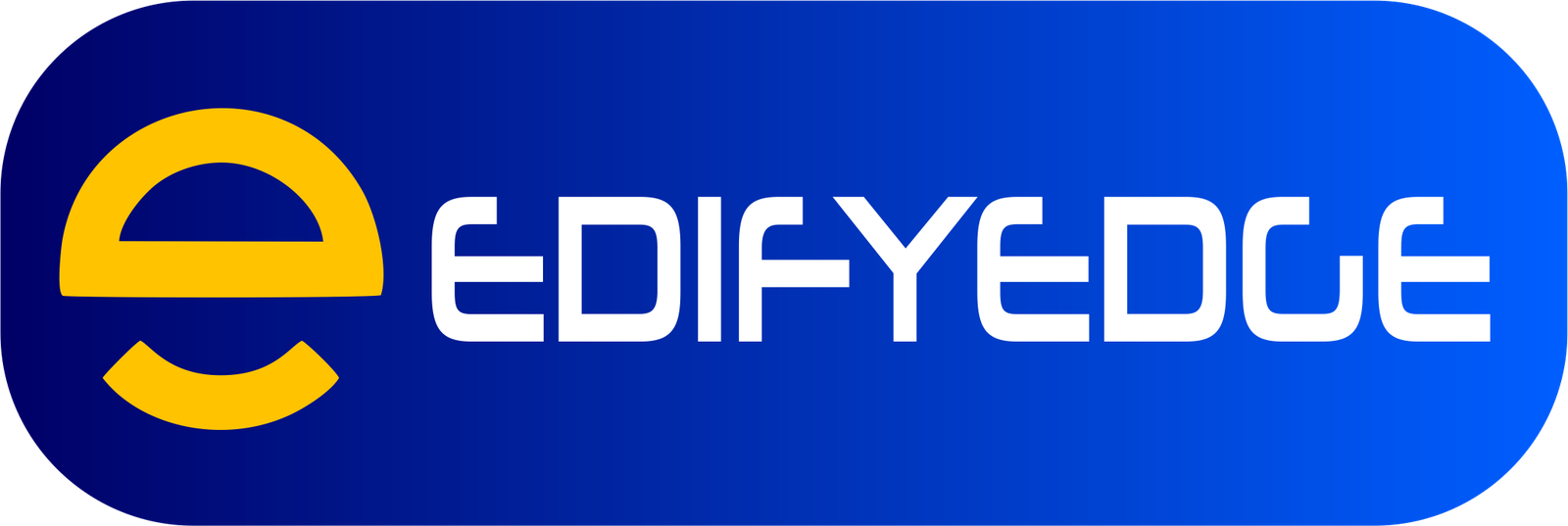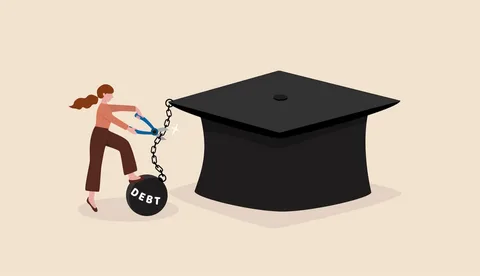What is Educator Student Loan Forgiveness?
The Educator Student Loan Forgiveness Program is a federal program designed to provide financial relief to teachers and other eligible educators by forgiving a portion of their outstanding federal student loan debt. This program acknowledges the vital role educators play in shaping the future of society and aims to incentivize individuals to pursue careers in the education field.
To be eligible for the Educator Loan Forgiveness Program, an individual must meet the following criteria:
-
Hold a qualifying loan: Only Direct Loans (subsidized and unsubsidized) and certain Federal Family Education Loans (FFEL) are eligible for forgiveness under this program.
-
Work as a full-time teacher: Applicants must have worked full-time as a teacher for five consecutive academic years at a low-income elementary or secondary school or educational service agency.
-
Meet subject matter expertise: Certain subject areas, such as mathematics, science, special education, and bilingual education, may receive preferential consideration.
The program allows for the forgiveness of up to $17,500 in federal student loan debt for teachers in qualifying subject areas or up to $5,000 for other eligible educators. This forgiveness amount can significantly reduce the financial burden faced by many educators, who often enter the profession with substantial student loan debt.
Who Qualifies for Educator Loan Forgiveness?
To qualify for the Educator Loan Forgiveness Program, you must meet the following criteria:
Teaching Requirements
- You must be a full-time teacher for five complete and consecutive academic years.
- Your employment must be at an elementary or secondary school, or an educational service agency.
School Types
- The school must be listed in the Teacher Cancellation Low Income Directory, which includes public and nonprofit private schools serving low-income students.
- Schools operated by the Bureau of Indian Education (BIE) or on Indian reservations by Indian tribal groups also qualify.
Subjects Taught
- You must teach certain subject areas, including mathematics, science, bilingual education, foreign languages, special education, reading, or another field of expertise determined by a state education agency to have a shortage of qualified teachers.
Years of Service
- The five years of qualifying teaching service do not need to be consecutive, but they must be completed after the 1997-1998 academic year.
- Any years of service prior to this date cannot be counted toward the five-year requirement.
It’s important to note that the Educator Loan Forgiveness Program has specific requirements, and not all teachers or educational professionals may qualify. Meeting the criteria outlined above is crucial to be eligible for this federal student loan forgiveness program.
How Much Can Be Forgiven?
The Educator Loan Forgiveness Program offers a maximum forgiveness amount of $17,500 on eligible federal student loans. However, the specific amount you can receive depends on your role as an educator.
If you are a highly qualified full-time teacher in a low-income elementary or secondary school, or an educational service agency serving low-income students, you may be eligible for up to $17,500 in loan forgiveness. This amount is available after five complete and consecutive academic years of qualifying teaching service.
On the other hand, if you are a full-time teacher in a different subject area or a qualified elementary or secondary school employee, such as a counselor or administrator, you may be eligible for up to $5,000 in loan forgiveness after the same five-year period.
It’s important to note that the forgiveness amount applies to the remaining outstanding principal balance on your eligible federal student loans. Any remaining loan balance after the forgiveness is still your responsibility to repay according to the terms of your loan agreement.
Types of Federal Loans Eligible
The Educator Student Loan Forgiveness program is available for certain types of federal student loans. Eligible loan types include:
Direct Loans
- Direct Subsidized Loans
- Direct Unsubsidized Loans
- Direct PLUS Loans (for graduate or professional students)
Federal Family Education Loan (FFEL) Program Loans
- Subsidized Federal Stafford Loans
- Unsubsidized Federal Stafford Loans
- Federal PLUS Loans (for graduate or professional students)
Federal Perkins Loans
Perkins Loans are low-interest federal student loans for undergraduate and graduate students with exceptional financial need.
It’s important to note that private student loans and certain older federal loan programs, such as the FFEL PLUS Loans for parents, are not eligible for the Educator Loan Forgiveness program. Additionally, any defaulted loans must be resolved before you can qualify for forgiveness.
Application Process
To apply for the Educator Loan Forgiveness program, you’ll need to complete the Teacher Loan Forgiveness Application form. This form requires information about your employment history, the loans you want forgiven, and certification from your employer(s) that you meet the program’s requirements.
Along with the completed application form, you’ll need to provide documentation to prove your eligibility. This typically includes:
- Evidence of your employment as a teacher, such as W-2 forms or employment contracts
- Loan statements or payment histories for the federal loans you want forgiven
- Certification from your employer(s) confirming you taught in a qualifying school or educational service agency
Once you’ve gathered all the necessary documentation, you’ll need to submit your application and supporting materials to your federal loan servicer or the U.S. Department of Education’s Educator Loan Forgiveness program. Be sure to follow all instructions carefully and meet any submission deadlines.
It’s important to note that the application process can take several months to complete, so it’s best to apply well in advance of any potential loan forgiveness eligibility dates. Additionally, you may need to provide additional information or documentation if requested by the program administrators during the review process.
Loan Forgiveness vs Income-Driven Repayment Plans
The Educator Student Loan Forgiveness Program and income-driven repayment plans are two different strategies for managing student loan debt, each with its own advantages and disadvantages for educators.
Differences:
Loan forgiveness is a program that provides complete forgiveness of a portion of your remaining federal student loan balance after meeting specific service requirements. Income-driven repayment plans, on the other hand, are repayment strategies that cap your monthly payments based on a percentage of your discretionary income, with the potential for loan forgiveness after 20-25 years of qualifying payments.
Pros of Loan Forgiveness for Educators:
- Offers complete forgiveness of up to $17,500 (or $5,000 for STEM educators) of your remaining federal student loan balance after meeting the service requirements.
- Provides a clear path to loan forgiveness within a relatively short timeframe (5 years of qualifying service).
- No income requirements or restrictions, making it accessible to all qualifying educators.
Cons of Loan Forgiveness for Educators:
- Limited to specific types of federal loans and loan amounts.
- Strict eligibility criteria, including teaching at a low-income school or educational service agency.
- Forgiveness is considered taxable income in some cases.
Pros of Income-Driven Repayment Plans:
- Offers more affordable monthly payments based on your income and family size.
- Potential for loan forgiveness after 20-25 years of qualifying payments.
- Available for a wider range of federal student loans.
- No specific employment or service requirements.
Cons of Income-Driven Repayment Plans:
- Longer repayment period, potentially resulting in higher overall interest costs.
- Forgiven loan amounts are typically considered taxable income.
- Strict annual income verification and recertification requirements.
Educators should carefully evaluate their individual circumstances, including their loan balances, income levels, and career goals, to determine which option – loan forgiveness or income-driven repayment plans – better aligns with their financial objectives and long-term plans.
Tax Implications
The student loan forgiveness amount received through the Educator Loan Forgiveness Program is considered taxable income by the Internal Revenue Service (IRS). This means that you will need to report the forgiven amount as part of your gross income when filing your federal income tax return for the year in which the loan was forgiven.
While the forgiven loan amount can increase your taxable income, potentially pushing you into a higher tax bracket, it’s important to remember that you are not actually receiving that money as cash in hand. Instead, you are relieved of the obligation to repay that portion of your student loan debt.
It’s advisable to plan ahead and set aside funds to cover the additional tax liability resulting from the loan forgiveness. Alternatively, you can make adjustments to your tax withholdings from your employer to cover the anticipated increase in taxes owed.
Some states may also tax the forgiven loan amount as income, so be sure to check your state’s tax laws regarding student loan forgiveness. Consulting with a tax professional can help you understand the specific tax implications for your situation and ensure you remain compliant with all applicable tax laws.
Alternatives for Non-Qualifying Educators
For educators who do not meet the strict eligibility requirements for the Teacher Loan Forgiveness program, there are several alternative options to explore for managing and potentially reducing their student loan burden.
Other Forgiveness Programs
Additionally, some states offer loan forgiveness programs specifically designed for teachers in high-need subject areas or low-income schools.
Income-Driven Repayment Plans
Income-driven repayment plans like Income-Based Repayment (IBR), Pay As You Earn (PAYE), and Revised Pay As You Earn (REPAYE) can help make monthly student loan payments more affordable by capping them at a percentage of your discretionary income.
Loan Consolidation
Consolidating multiple federal student loans into a single Direct Consolidation Loan can simplify repayment and potentially lower your monthly payments by extending the repayment term. However, consolidation may not be the best option if you are pursuing loan forgiveness programs like PSLF or Teacher Loan Forgiveness, as it can reset your qualifying payment count.
It’s essential to carefully evaluate your options and seek guidance from student loan advisors or financial experts to determine the best approach for managing your student loan debt based on your unique circumstances and long-term goals.
Public Service Loan Forgiveness for Educators
The Public Service Loan Forgiveness (PSLF) program is a separate federal loan forgiveness program available to educators and other eligible public service employees. While the Educator Loan Forgiveness program has stricter requirements, PSLF offers more generous forgiveness terms for those who qualify.
To be eligible for PSLF, you must be employed full-time by a qualifying public service organization, such as a public school system, college, or university. You’ll need to make 120 qualifying monthly payments on your eligible federal student loans while working for an approved employer.
However, not all federal loans are eligible for PSLF. Only Direct Loans qualify, so you may need to consolidate other federal loans into a Direct Consolidation Loan first. Private student loans do not qualify for PSLF.
It’s important to submit an Employment Certification Form annually to ensure your payments and employment qualify for PSLF. Maintaining accurate records and meeting all program requirements is crucial to receiving loan forgiveness through this program.
Expert Tips and Advice
Financial aid experts recommend several strategies to maximize your student loan forgiveness benefits as an educator:
Understand Eligibility Requirements Thoroughly
Maintain meticulous records to prove your eligibility if requested.
Strategize Federal Loan Repayment
If you have multiple federal student loans, focus on repaying any ineligible loans first while making minimum payments on eligible loans. This way, you can maximize the forgiveness amount on the remaining eligible loans after meeting the teaching service requirements.
Explore Income-Driven Repayment Plans
This option may be beneficial if you don’t meet the strict requirements for the Educator Loan Forgiveness Program.
Seek Professional Guidance
Student loan forgiveness programs can be complex, and requirements may change over time. Consult with a qualified financial advisor or student loan expert to ensure you’re taking the most advantageous approach based on your unique circumstances and long-term goals.
Stay Informed and Plan Ahead
Regularly check for updates and changes to the Educator Loan Forgiveness Program or other forgiveness opportunities.



